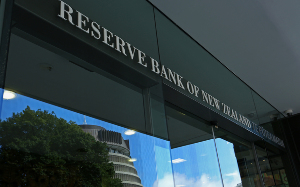
S&P has grouped New Zealand's banking sector in "group four" of its Banking Industry Country Risk Assessment, on par with Iceland and Ireland, which both suffered severe banking crises in the aftermath of the GFC.
S&P's "group four" also includes Estonia, Kuwait, Malaysia, Mexico, Poland and Saudi Arabia.
The credit rating agency believes "persistent" current account deficits, expected to be in line with historical levels of 3%-4% of GDP, pose a potential problem for the banking sector.
S&P also says high levels of external debt, roughly 170% of current account receipts, could be a problem for the sector.
The agency says: "In our view, the New Zealand banking sector's funding profile remains a weakness for the banking system. This is despite a modest strengthening of banks' customer deposits and a slight reduction in banks' dependence on external borrowing over the last few years."
Overall, the agency says risks to the NZ banking system have "stabilised" over the past few years due to a slowdown in house prices and tighter controls imposed by the Reserve Bank.
"Although New Zealand banks remain exposed to risk emanating from the rapid growth in house prices and private sector debt in recent years, the ongoing orderly unwinding of imbalances in the housing market over the past two years has reduced the risk, in our view," the report adds.
S&P believes any weaknesses in the NZ banking sector would likely be offset by "funding support" from the New Zealand government and central bank "if needed in a stress scenario".



Comments
No comments yet.
Sign In to add your comment